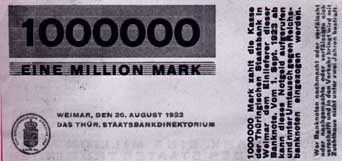apprentice to architect George Schmidthanmer who worked
in architecture decorative arts. A year later Bayer became an assistant
to architect Emanuel Margold, working in graphic design and typography.
Years 1921 through 1923 Bayer was enrolled in Bauhaus as a painter,
typographer and designer. In 1923 and 1924 he was earning a living as a house
painter, first in Italy and later in Germany. In 1925 through 1928 Bayer taught typography
and graphic design as a master at Bauhaus, Dessau. Later on he worked for almost 10 years in Berlin,
Germany as a painter, photographer and graphic exhibition architect. As a director of Dorland Studio
and art director, he moved to New York, continuing working as a painter, graphic art planner, and
teacher for 12 years. In 1946 he moved to Colorado as a design consultant for the development. 1946
through 1985 he continued working as a painter, designer, architect. While in Aspen, Bayer broadened
his practice as an artist to include environmental art, tapestries, carpets, wall hangings, and writing.
* * * * * * * * * *
Herbert Bayer worked in a variety of fields but his favorite subject
remained painting. “ I consider myself to be primarily a painter,
and painting is the continuous lin
 k
connecting the various facets
k
connecting the various facets
of my work. If one is born a painter, one has to paint.”
Bayer's painting as all of his other work was influenced greatly
by Bauhaus. Bauhaus years in Weimar (1919-1924) were “intensely
visionary and drew inspiration from expressionism”. Bayer made
a cover design for Bauhaus exhibition catalogue in 1923.
The same year the banknote-production was a booming industry
in Germany due to inflation. Bayer was commissioned to design
the one and two million and the one billion mark notes. Bayer's designs
were very different in a way that they were “... models of simplicity and directness...”
* * * * * * * * * *
The 2nd World War influenced Bayer's work as well as his life. The designs he
produced during and after the war were very different from those that he created during
Bauhaus period. Now his art became much more illustrative. “ Sensitive to his new
audience and oriented toward communications problem solving, Bayer moved into an
almost pictographic illustration style that has combined with the hierarchy of information
and the strong underlying composition he pioneered at Dessau.” Hand- painted
illustration and hand- lettering were dominant in Bayer’s works during that time but he
still was committed to functional communication, asymmetrical balance and the unity of
letter forms and images.
* * * * * * * * * *
After the war, concepts of graphic de
all throughout the world. The style of typography became more compact,
using brief, concise statements. Dynamic information patterns were
combined with clear rational organization. Herbert Bayer was involved
as a designer and editor in a major graphic design accomplishment which
was a publication of the World geographic Atlas. “ Bayer assembled
information from multiple scientific disciplines, including geography,
astronomy, climatology, and sociology, and presented it through
symbols, charts, and diagrams.”
* * * * * * * * *
When dealing with typography, Herbert Bayer c
of making all the letters in the alphabet lower-case. By doing that,
Bayer wanted to create one alphabet instead of two, making it more convenient
to viewers. Thus, the universal alphabet was created. Later, Bayer developed
variations of the original universal alphabet, such as the bold, condensed,
handwriting and typewriter styles.
* * * * * * * * * *
As we see, Herbert Bayer's growth as an artist evolved throughout years
of changes. However, his style seems to show in each one of his work.
Tendency for balanced asymmetry, use of bold simple type, rhythm
and motion of the composition combined with simplicity and clarity- all these
are elements of his style. What makes Bayer's works so unique is his ability
to balance these components of design.
Despite of the fact that Bayer denies the complexity of having capital letters in
the alphabet, he still uses them in some of his works. The way Bayer uses type
makes his compositions rhythmic without usage of images. He uses different fonts,
different sizes and types of letters, carefully balancing them in what seems to be
asymmetry. There is a great deal of using diagonal lines of type to create movement.
Herbert Bayer's use of type combined with the principles of design serves
as a powerful tool for delivering a certain message to the viewer.
The images in most of Bayer's designs are used to support and deliver idea or
message and not only attract attention to the piece. The images are mostly
geometric and flat or photographic. Each and every image takes its specific place
in a composition, supporting and emphasizing the idea
* * * * * * * * * *
Herbert Bayer's bold approach to the concepts of graphic design, his talent
and his achievements influenced growth of graphic design throughout the world.
He was an artist and a teacher who
others the ability to see and understand art in a new and modern way.